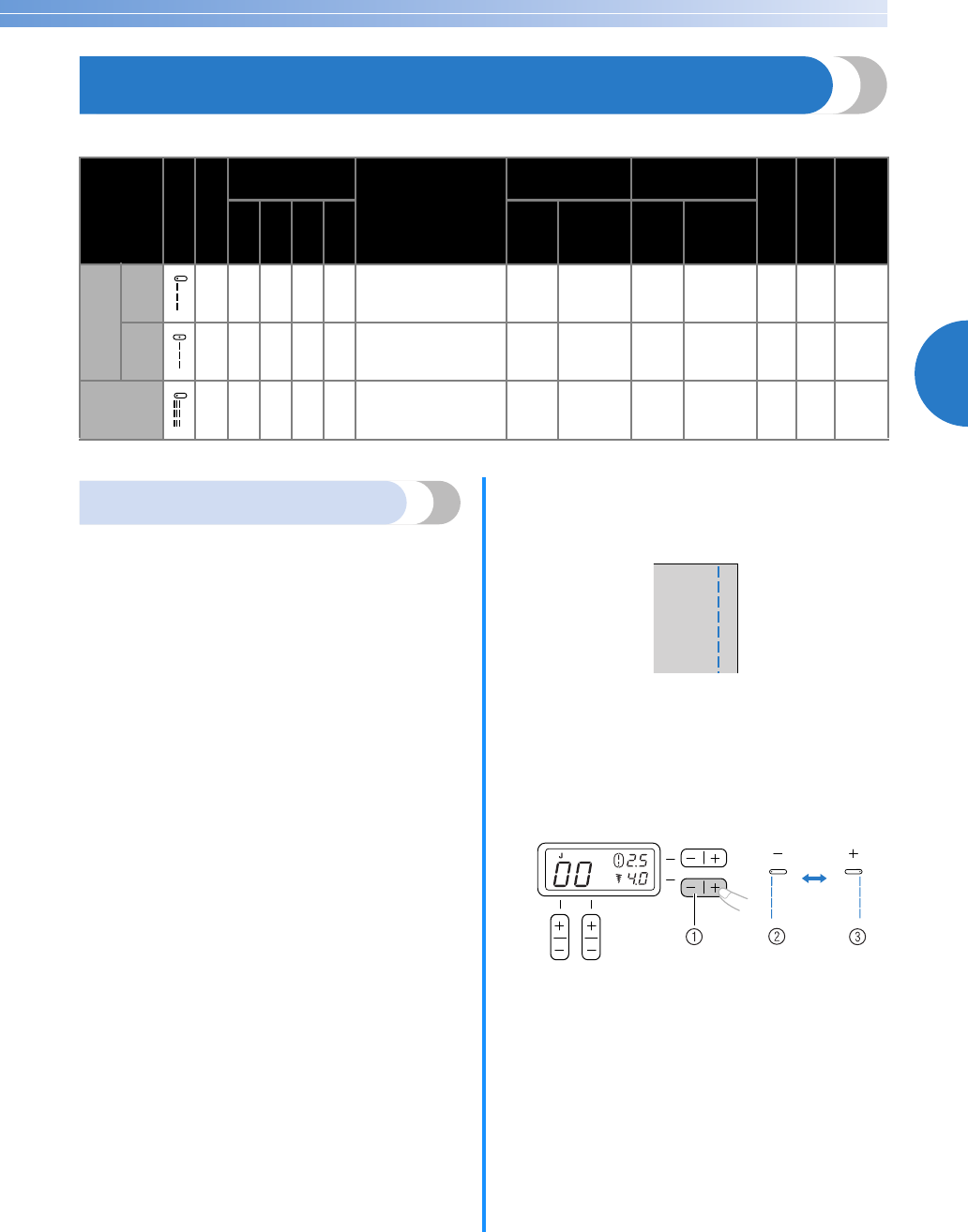
35
3
BASIC STITCHING
Straight stitches are used for sewing plain seams. Three stitches are available for basic stitching.
*Rev.: Reverse **Rfc.: Reinforcement ***Do not use reverse stitching.
Basic stitching
a
Baste or pin together the fabric pieces.
b
Attach zigzag foot “J”.
c
Select a stitch.
• For details, refer to “Selecting stitching”
(page 27).
d
Lower the needle into the fabric at the
beginning of the stitching.
e
Start sewing.
• For details, refer to “Starting to sew”
(page 28).
• For details on sewing reverse/reinforcement
stitches, refer to “Sewing reinforcement
stitches” (page 29).
f
When sewing is finished, cut the thread.
• For details, refer to “Starting to sew”
(page 28).
■ Changing the needle position
With the straight stitch (left needle position) and
the triple stretch stitch, the needle position can be
adjusted. Pressing the “+” side of the stitch width
adjustment key moves the needle to the right;
pressing the “–” side of the stitch width
adjustment key moves the needle to the left.
a Stitch width adjustment key
b Left needle position
c Right needle position
Stitch Name
Pattern
Presser Foot
Pattern No.
Application
Stitch Width
[mm (inch.)]
Stitch Length
[mm (inch.)]
Twin Needle
Walking Foot
Reverse/
Reinforcement
Stitching
70 stitches
model
60 stitches
model
50 stitches
model
40 stitches
model
Auto Manual Auto Manual
Straight
Left J 00000000
Basic stitching, sewing
gathers or pintucks, etc.
0.0
(0)
0.0–7.0
(0–1/4)
2.5
(3/32)
0.2–5.0
(1/64–3/16)
No Yes Rev.
Center
J 01010101
Attaching zippers, basic
stitching, and sewing
gathers or pintucks, etc.
––
2.5
(3/32)
0.2–5.0
(1/64–3/16)
Yes
( J )
Yes Rev.
Triple
stretch stitch
J 02020202
Attaching sleeves, sew-
ing inseams, sewing
stretch fabrics and deco-
rative stitching
0.0
(0)
0.0–7.0
(0–1/4)
2.5
(3/32)
1.5–4.0
(1/16–3/16)
No No Rfc.
*
**
***
***
*


















